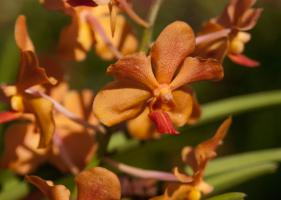When to Plant Paulownia Trees
Paulownia trees are beautiful, fast-growing trees that are prized for their wood, shade, and ornamental features. They thrive in a variety of climates and soil types, and can be a great addition to any landscape. However, if you want your paulownia trees to grow strong and healthy, you need to plant them at the right time. In this article, we’ll take a look at when to plant paulownia trees to ensure success.
Spring Planting
The best time to plant paulownia trees is in the spring, ideally after the last frost but before the soil starts to get too warm. This ensures that the trees have plenty of time to establish themselves before the heat of summer sets in. Planting too early can expose the trees to frost damage, while planting too late can cause the trees to struggle in the heat.
When planting in the spring, it’s important to choose a site that receives full sun and has well-drained soil. Paulownia trees need at least six hours of direct sunlight each day to grow strong and healthy, and they don’t like to have their roots sitting in water.
Fall Planting
If you miss the window for spring planting, fall is the next best time to plant paulownia trees. Fall planting allows the trees to establish their root systems before the cold weather sets in, and can help them get a head start in the spring. However, it’s important to plant early enough in the fall to give the trees time to take root before the ground freezes.
When planting in the fall, it’s important to protect the trees from the elements. Covering the root zone with a thick layer of mulch can help to insulate the soil, protect the roots from frost, and retain moisture throughout the winter.
Year-Round Planting
While spring and fall are the best times to plant paulownia trees, you can technically plant them year-round as long as you take certain precautions. In cooler weather, it’s important to choose a warm and sunny day to plant, and cover the root zone with a thick layer of mulch to protect the soil and roots from the cold.
In warmer weather, it’s important to plant in the early morning or late afternoon to avoid exposing the trees to the heat of the day. Be sure to keep the soil moist to help the trees establish themselves.
Conclusion
When to plant paulownia trees ultimately depends on your climate and the weather conditions in your area. If you live in an area with mild, temperate weather, spring and fall are the best times to plant. If you live in an area with more extreme weather conditions, you may need to take extra precautions to ensure the trees’ success. Regardless of when you plant, be sure to choose a site with plenty of sun and well-drained soil, and provide the trees with proper care and attention to help them thrive.

 how many times do yo...
how many times do yo... how many planted tre...
how many planted tre... how many pine trees ...
how many pine trees ... how many pecan trees...
how many pecan trees... how many plants comp...
how many plants comp... how many plants can ...
how many plants can ... how many plants and ...
how many plants and ... how many pepper plan...
how many pepper plan...































